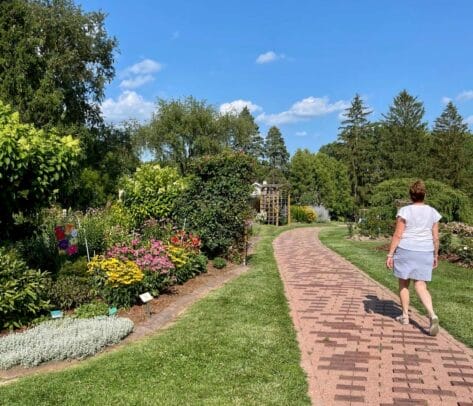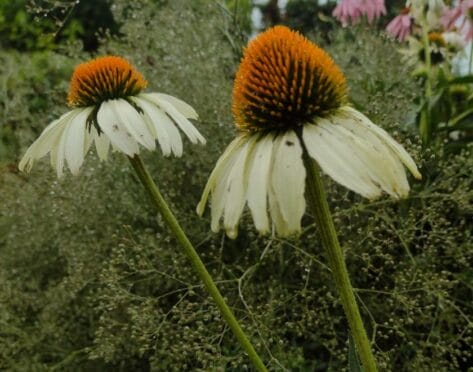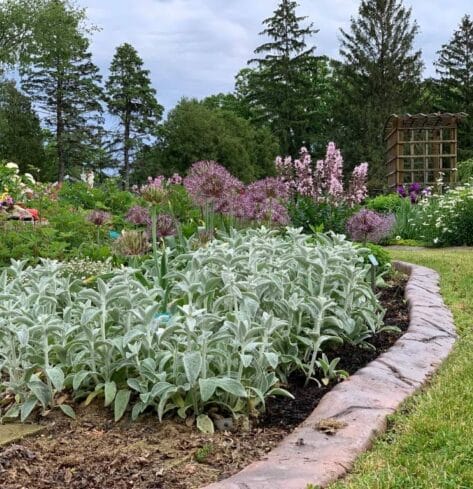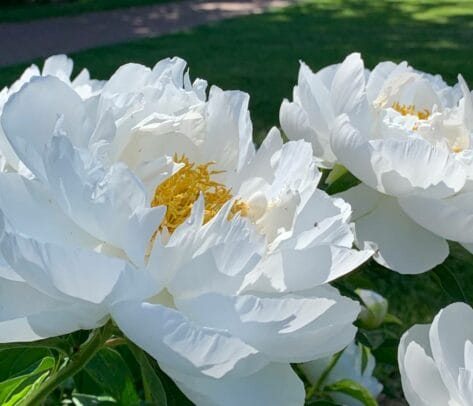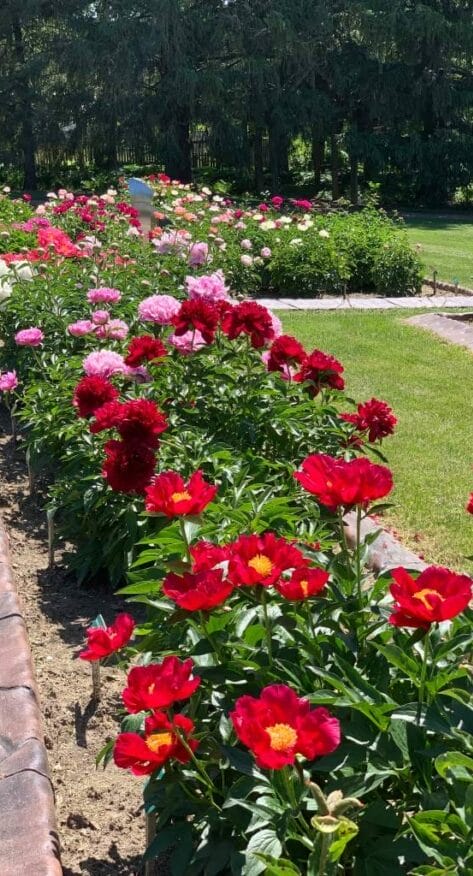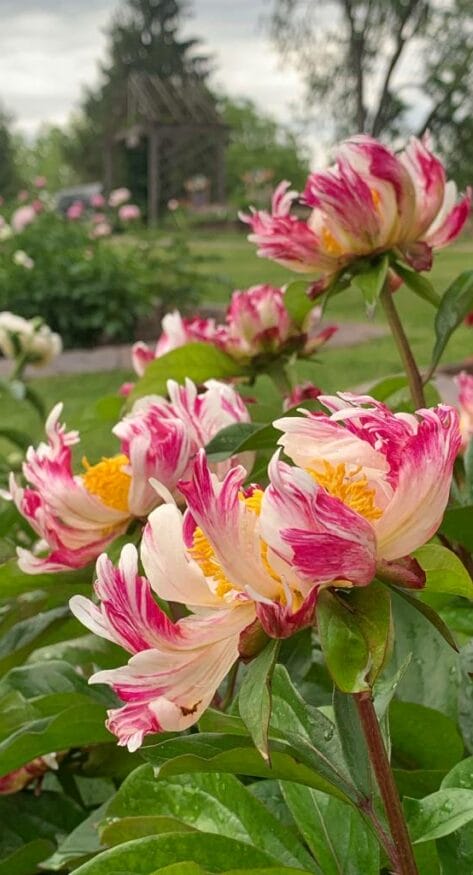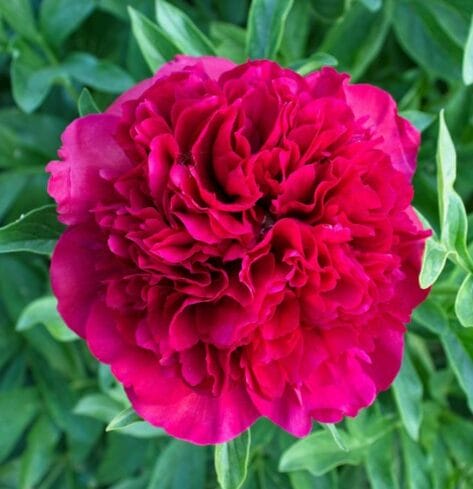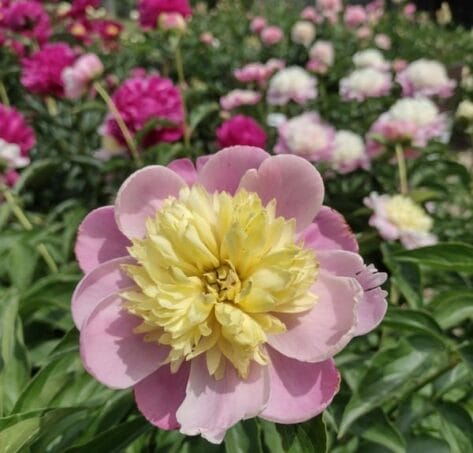Perennial Gardens
Perennials are a flower garden’s backbone. They provide texture, beautiful colors, and a variety of forms. By definition, a perennial has a lifespan of at least two years, but most last much longer.
A perennial will start with green growth then bloom for a period of time; then will be finished in blooming for that year. Some new varieties being introduced are re-blooming once they have been deadheaded.
A stroll through the Perennial Gardens will provide information about size, blooming time, and leaf patterns. Perennials can be cut back in late fall or left over the winter season to provide shelter for insects and bees as well as seasonal interest during the winter. A perennial garden is nectar to pollinators where you will often see busy bees enjoying the nectar from the plants.
A sampling of perennials might include coneflowers, irises, peonies, hibiscus, bleeding hearts, delphinium, balloon flowers, cardinal flowers, mums, Sylvia, yarrow, astilbe, Shasta daisy, dianthus, blanket flowers, catmint, columbine, garden phlox, penstemon, and hardy geraniums.
Peony Collection
The peony collection is one of the earliest features of the Dubuque Arboretum & Botanical Gardens. Most of the plants were donated by Klehm Nursery in 1983-84, and the majority are still original plants since peonies can live 25-50 years, or even longer.
Everyone has a favorite from our peony collection, which consists of about 70 named cultivars and is recognized by the American Peony Society. Some of the plants are rare, and many of them have won awards over the years.
MEMBER

Viewing the Peonies
The peony collection is primarily displayed in five rectangular beds, bordered with decorative edging, a new design that allows visitors to walk among the blooms and see them up close. Memorial Day weekend is the time traditionally recommended for viewing our peonies. Some will bloom earlier, and others a little later, depending on the specific plant. Also, weather conditions in any particular year may affect bloom time.
The scientific name of these cultivars is Paeonia lactiflora, and they are “herbaceous” types, meaning that they die back in the fall and send up new shoots in the spring. The cultivar names are intriguing, ranging from ‘Bridal Icing’ and ‘Raspberry Sundae’ to ‘President Lincoln’ and ‘Mr. Ed.’ Each name appears on a stake next to the plant so that any visitor who takes a fancy to a particular flower should be able to obtain it from a nursery or website that offers peony tubers.
Other Areas to See Peonies in Our Gardens
In addition to the main collection,
- Several peony cultivars are displayed in the Japanese Garden, including four tree (woody) peonies.
- To the left of the Formal Herb Garden is a row of intersectional peonies, which are crosses between herbaceous and tree peonies.
- Assorted individual peonies also appear in some of the perennial beds, including a double fernleaf peony, 'Rubra Plena'.
WITH APPRECIATION Creation, care, and maintenance of the Perennial Gardens: the Perennial Bed Adopters.



